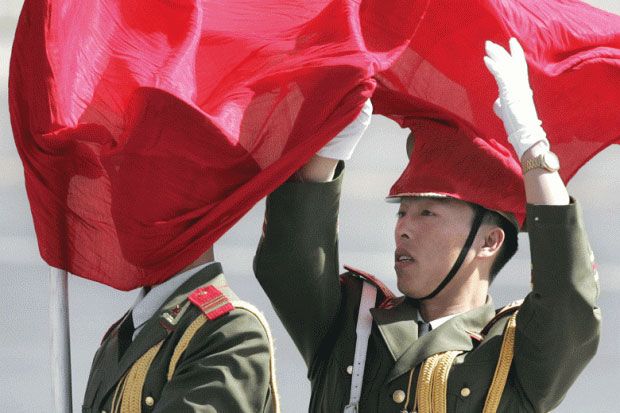The continuing growth of China’s research system could be at risk if global political tensions undermine the ability of its researchers to collaborate internationally, according to new analysis.
Data from a Times Higher Education report on the country’s university system, being launched in Beijing to mark 70 years since the founding of the People’s Republic of China, show that growth in the share of research that features international collaboration has been stalling in recent years in some research areas.
For instance, the proportion of Chinese research in biochemistry, genetics and molecular biology that involved international co-authors fell from 26 per cent in 2016 to 24 per cent last year, according to figures from Elsevier’s Scopus bibliometric database. This compares with a 27 per cent share for international collaboration across the world in this area, 46 per cent for US research and 51 per cent for European Union countries.
Even in some areas of relative strength for China, such as computer science, the portion of research featuring overseas collaboration has expanded much more slowly in the past few years compared with other nations.
In engineering, the field representing the largest chunk of research in China, papers with international collaboration published in 2016 have achieved an average of 13.4 citations, compared with 11.6 for the US. But China’s average citation rate for domestic engineering research is just 5.8 for 2016 papers, compared with 7.2 for the US.
The THE report also shows that international co-authorship in China is strongly focused on just a few of its highest performing universities.
In general, US universities in the THE World University Rankings are well ahead of China on scores for international co-authorship, except for four outlier Chinese institutions that outperform every US university on this metric.
It all comes against the backdrop of rising political tensions between China and the US, and the Trump administration’s clampdown on overseas researchers who, it believes, threaten the country’s “research security”.
The THE report – which also features extensive analysis of China’s swift rise in higher education and research since 1949 – says the data should “act as a warning” that the “opening up” that kick-started the country’s scientific development “need[s] to be sustained if future scientific progress is to be as rapid”.
Simon Marginson, professor of higher education at the University of Oxford, said that despite China’s system now being “much larger and more robust” than in the past, cuts in academic ties with the US could have a “sharp negative impact” on Chinese research quality in many areas.
However, he also pointed out that in disciplines such as engineering and computing, the US might be hurt just as badly.
Wei Zhang, lecturer in education at the University of Leicester, said the Trump government’s crackdown could result in top Chinese academics returning to China and thus boosting the quality of national research.
“Returnee scholars sustain their academic networks, and the shortened geographical distance may strengthen academic collaboration, hence boost[ing] Chinese research impact,” she said.
simon.baker@timeshighereducation.com
To download the full report, Higher education in China 70 years on from the founding of the People’s Republic of China: a report and analysis by Times Higher Education (available in Mandarin only), please click here.
Find out more about THE DataPoints
THE DataPoints is designed with the forward-looking and growth-minded institution in view





